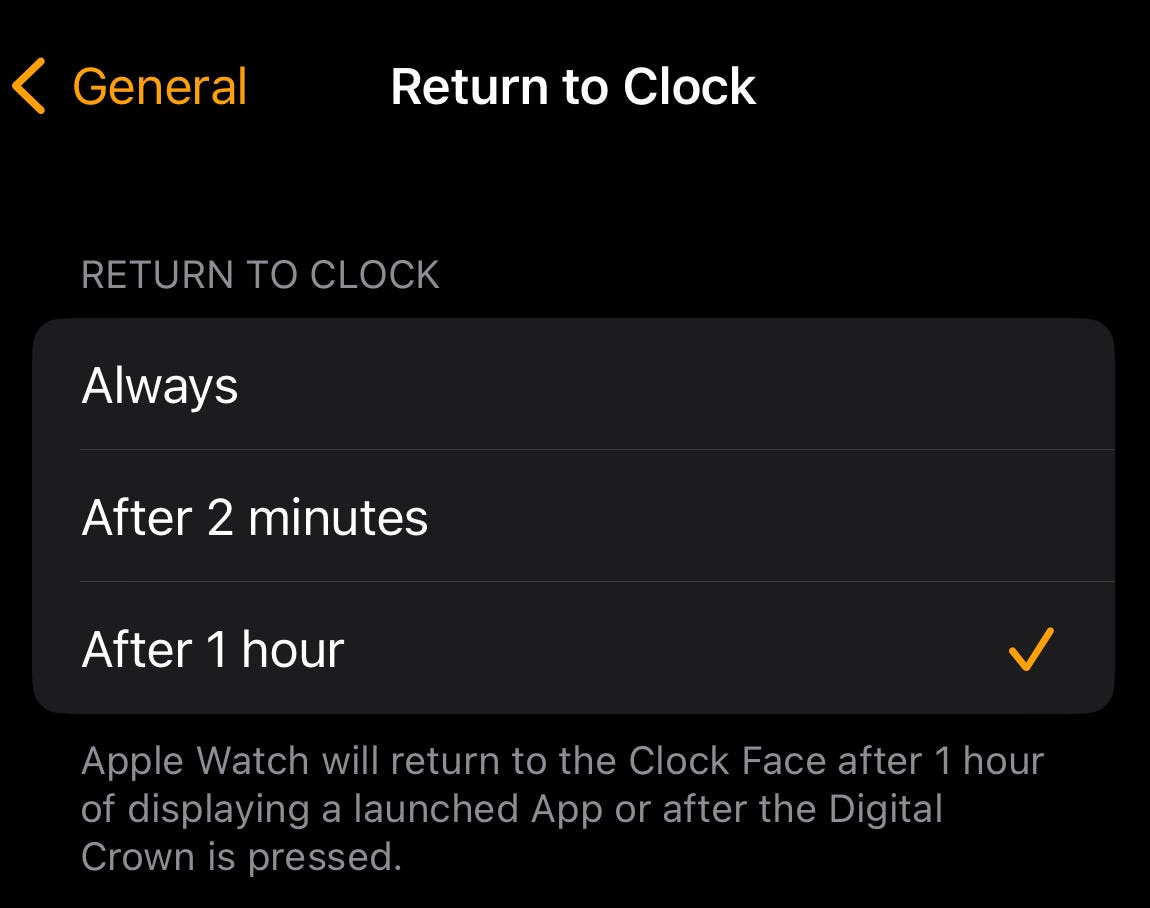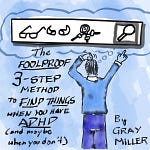
I became aware of, and bought, the Apple Watch about eleven years ago.
I became aware of my ADHD, and was diagnosed, about a year ago.
But I’ve had it for about fifty-four.
When the device came out in 2012, it seemed the perfect tool for my busy life: all the alarms I would ever need, the ability to receive and respond to texts, haptic taps for directions, and an infinite variety of watch face combinations from the minimalist to the ridiculous.
Like any technology, the promise came with a price. My partner and my friends grew to dislike the little buzz of notifications that came at any particular time. The urge to fiddle with the settings or change the face or install a new app became a convenient procrastinative device when I didn’t want to do something. It was hard to find the balance between “useful” and “distracting”.
Now, looking at it thru the lens of my ADHD diagnosis, that makes total sense. The watch was an improved scaffolding to compensate for my time blindness and hyper-focus. Again and again it was the thing that reminded me: you have to stop what you’re doing and do something else now.
At the same time, it is a dopamine dispenser. Ooh! A text! Hey! An update! Wait, you say there’s a neat game I can put on there? What, a Star Trek background that makes it look like an LCARS display?
Those infinite settings, pretty light-up display, and multiple notifications have been a tempting and easy squirrel that I’ve followed too many times.
What if I could minimize the distraction but leverage the power?
There had to be a way that my Apple Watch could help compensate some aspects of ADHD and also augment the “super-powers”: hyper-focus and spontaneous idea association.
I had to do it carefully, though. I live in the most distracting culture on the planet with a brain that is more distractible than most.
Here’s what I did:
1. Twist the watch to the inside of my wrist.
I started simple: out of sight, out of mind. You may already do this, because you’re cool like John Wick, but if not, I urge you to give it a try.
Here’s a visual to illustrate:
The Apple Watch has a tough enough face that it’s not going to be scratched in everyday life. It also makes it less convenient to access the screen and dial — which is a good thing. The obstacle is the way to not mess with it unless I actually need to.
Just putting my watch on the inside of my wrist has helped me escape the constant urge to see how much time has passed, fiddle with the apps, or suddenly decide I need to change the watch face.
More than that, putting the clock face out of sight minimizes the feeling of being bound by time — something I wrote about more extensively here:
* Related: Your Clock is Stealing Your Life on graymiller.medium.com
Instead of a little nagging Miss Minutes on my wrist, I choose when I want to know what time the rest of the world has decided it is.
The rest of the time is mine, to experience for myself.
2. Tweak three watch settings.
First of all, let’s get one thing clear: I’ve not found any way to get the Apple Watch to do what I actually want it to do.
That is: I would like the display to only show a timer app, without the time, every time I look at my wrist. Since I can’t do that, here’s the workarounds I’ve found that help me escape the minutes and slip into flow.
Turn off always on. Everybody was excited when Apple found a way to have the watch display show, dimly, all the time. You didn’t have to raise your wrist or push a button to wake your watch!
However, a watch that is always on is always watching me. The urge to check what time it is constantly takes me outside of whatever task I’m doing. Go to Watch App → Displays & Brightness → Always On and turn it OffSet Return to Clock to One Hour
Another thing that helps me stay in focus is to make sure that when I’ve set music or a timer or some other focus my watch won’t switch back to the default face as quickly.
in a perfect world, I’d be able to tell it to only be a haptic timer on my wrist, and nothing else. As far as I can tell — after about an hour of research online — there’s not much of anything that will do that (Pavlok comes close, but has horrible user reviews).
Unfortunately, even with Watch App → General → Return to Clock set to One Hour, all the apps have a “feature” that turns out to be an ADHD bug: they still want to show you the time. Want to play music? The time is up in the corner. Got a timer running? There’s a big beautiful circle showing how many minutes you have left…and the external time.
3. Pro Tip: Set Theater Mode If you’re reading an article about “improving focus” I’m betting you’ve read others, and you already know the ubiquitous tip of turn off as many notifications as possible. That kind of binary thinking always bothered me; I’d rather find ways to reduce the level of distraction instead.
Theater mode is designed to let your watch still have alerts — timer, important messages, etc — but not have the watch-face light up. I’ve found this is an extra bit of insulation from digital distraction that can be really helpful. If I need to know the time, or need some other app, I can always push buttons or use Siri.
You access this from your default watch screen — swipe up press the long button on the side and you’ll see a bunch of icons to trigger “flashlight” or “airplane mode” or the like.
3. Wherever possible I use timers instead of time.
Clocks are designed to force us all into experiencing time the same way.
This is useful when it comes to things like appointments and train schedules.
I realized, though, that when I use a clock to set the boundary for an activity, I am putting that activity in a context along with everything else that is happening in the world.
Let’s say I want to work out for a half hour, starting at 2pm. My brain will automatically start thinking about what comes at 2:30, about getting the dog to the groomer by 3, about yabba-dooing from work at 5, about whether I’ll get to sleep before 10, about whether I’ll stay asleep beyond 5am…
On the other hand (ha!) if I set a timer for 30 minutes, instead, then all the focus is on what I am doing. I have X minutes or hours left; that keeps my focused on what I’m going to accomplish in that time.
While there are lots of timer apps out there (the one that comes stock with the Apple Watch is pretty awesome, since you can voice-activate it) I’ve only found two at the time of this writing that will both operate as timers as well as sync with your calendar so you don’t have to re-do it for every activity: TIIMO and How Long Left (I am not affiliated with either app).
If I was trying to come up with some kind of pithy slogan, I might say something like Become a timer, not a timee.
But that’s kind of ridiculous, so we’ll pretend I didn’t.
It’s not perfect, but it’s better.
Please, someone invent a simple haptic timer app that will do everything that TIIMO or How Long Left does, but won’t show me the time.
Or a device that does that andcosts less than $40.
Until then, making these small changes has made more of my time feel subjective, rather than objective. I can’t escape Miss Minutes because (waves hands at capitalist hellscape surrounding us) but these tiny hacks give me access to some tiny corners of flow and peace.















